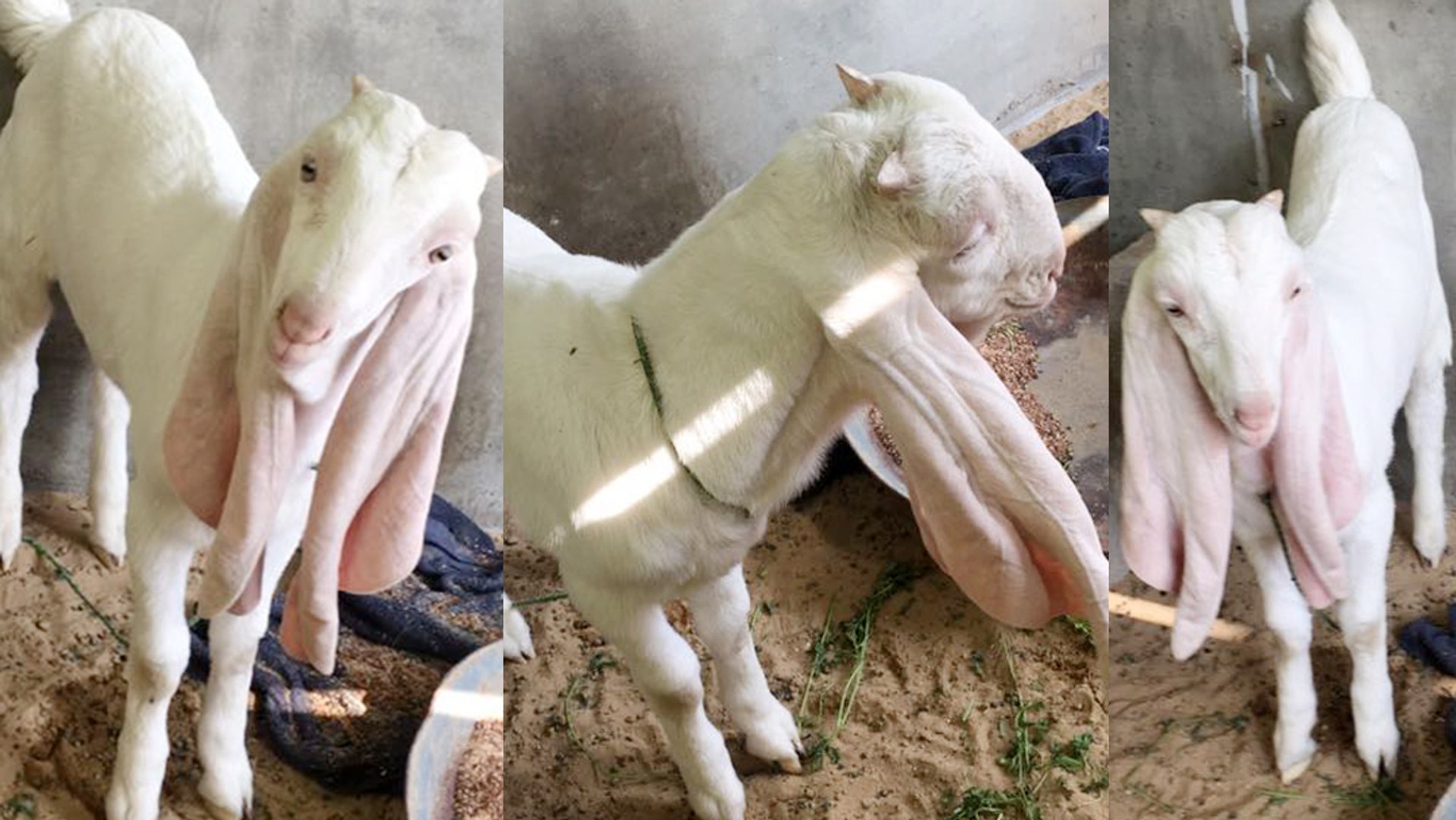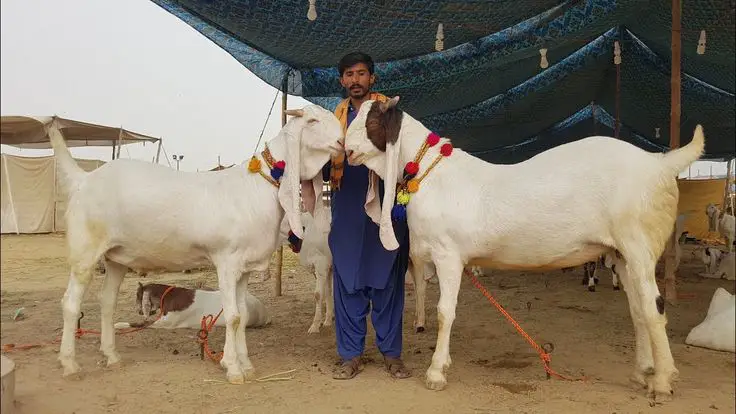Have you ever heard of a Gulabi goat? If not, you’ve come to the right place! Gulabi goats are a unique breed of animals that are known for their naturally pink or mauve coloring. This makes them quite the sight to behold! Gulabi goats have been around for centuries, but they’re still relatively unknown outside of their native regions. In this blog post, we’ll take a closer look at this special breed and explore what makes them so special. From their history to their current uses, read on to learn more about the incredible Gulabi goat.
What is Gulabi Goat?

Gulabi Goat is a type of domestic goat that is popular in North India and Pakistan. It is also known as the Kashmiri goat or the Punjabi goat. The Gulabi Goat is easily recognizable by its pinkish-red color.
The Gulabi Goat is a hardy breed that can withstand harsh conditions. They are well-suited to the mountainous terrain of their native regions. Gulabi Goats are usually kept for their milk, which is used to make cheese and other dairy products. However, they can also be used for meat production.
The Gulabi Goat is a docile animal that is easy to handle. They are also known for being very friendly and social creatures.
Origins of the Gulabi Goat
The Gulabi Goat is a native breed of India that is named for its distinctive pink color. The breed is thought to have originated in the state of Rajasthan, where it is still found today. There are several theories about how the Gulabi Goat came to be, but the most likely explanation is that it is a natural mutation of the common domestic goat.
The Gulabi Goat is a hardy breed that can tolerate hot and dry conditions. They are good browsers and can find food in even the aridest landscapes. Their milk is high in fat and protein, making it ideal for making butter and cheese.
The Gulabi Goat is an important part of Indian culture and has been featured in many artworks and folklore stories. In recent years, the breed has become popular in other parts of the world as a pet or livestock animal.
History of Gulabi Goat

Gulabi Goat is a breed of domestic goat that originated in India. The breed gets its name from the Hindi word for “pink”, and is known for its pinkish-hued skin and coat. Gulabi Goats are typically smaller than other breeds of domestic goats and are known for their docile and friendly temperament.
The exact origins of the Gulabi Goat are unknown, but the breed is thought to have originated in India. The first recorded mention of the Gulabi Goat was in a book published in 1854, which described the breed as being “of a beautiful pink color”. Gulabi Goats were first imported to the United States in the early 1900s and quickly became popular among farmers and hobbyists alike. Today, Gulabi Goats can be found in countries all over the world, and continue to be popular as both pets and livestock animals.
How to care for a Gulabi Goat?
Assuming you have a Gulabi Goat and want to take care of it, here are some tips:
First and foremost, remember that the Gulabi Goat is a desert animal and does not do well in humid or wet conditions. If you live in an area with such weather, be sure to provide your goat with a dry, warm shelter.
Gulabi Goats are also known to be very friendly and social creatures. As such, they require regular contact with humans or other animals. If you are the only one caring for your goat, make sure to spend at least 30 minutes a day petting or playing with it.
Finally, goats are notorious for being escape artists. Be sure to build a sturdy fence around their enclosure and check it regularly for holes.
What do Gulabi Goats eat?

Gulabi Goats are a type of domestic goat that is native to the Indian subcontinent. They are known for their unique pink or reddish coloration, which is caused by a genetic mutation. Gulabi Goats are used for milk production and meat production.
The diet of Gulabi Goats consists mostly of grasses and other vegetation. They will also eat leaves, flowers, and fruit if available.
Health Benefits of Owning a Gulabi Goat
The Gulabi Goat is a unique breed of goat that originates from the Rajasthan region of India. The breed is known for its distinctive pink coloration, which is the result of a genetic mutation. The Gulabi Goat is considered to be a sacred animal by many Hindus, and it is often used in religious ceremonies. The breed is also popular in Pakistan and Bangladesh.
The Gulabi Goat is prized for its milk, which is said to have medicinal properties. Milk is rich in fat and protein, and it contains high levels of calcium and phosphorus. Gulabi Goat milk has been used to treat a variety of ailments, including diarrhea, indigestion, and respiratory infections.
In addition to its medicinal benefits, Gulabi Goat milk is also said to be beneficial for the skin. The milk contains fatty acids that can help to moisturize the skin and reduce inflammation. Gulabi Goat milk has also been shown to improve the appearance of wrinkles and fine lines.
Rajhanpuri Goat
Rajhanpuri goats are a popular breed of dairy goat in India. They are known for their high milk production and friendly dispositions. Rajhanpuri goats are medium-sized, with short, fine hair. They come in a variety of colors, but the most common are black and white. Rajhanpuri goats are very hardy and can tolerate hot climates.
Uses of Gulabi Goat:
Meat Production:
Many goat breeds are raised for their meat, known as goat or chevon. If the Gulabi Goat is a meat breed, it could be raised primarily for meat production due to its growth rate, meat quality, and yield.
Milk Production:
Some goat breeds are bred for their milk production. If the Gulabi Goat produces a good amount of high-quality milk, it could be utilized for dairy purposes to make products like cheese, yogurt, and other dairy items.
Fiber:
Some goat breeds are raised for their fiber, such as cashmere, mohair, or wool. If the Gulabi Goat produces a unique or valuable type of fiber, it might be raised for its fleece.
Show and Exhibition:
Certain breeds are raised for their unique appearance and are often showcased in agricultural exhibitions or shows. If the Gulabi Goat has distinct physical features, it could be raised for exhibition purposes.
Breeding and Conservation:
Rare or unique breeds are sometimes raised to help conserve genetic diversity within the goat population. If the Gulabi Goat is a rare or endangered breed, it might be raised to preserve its genetic heritage.
Crossbreeding:
The Gulabi Goat could also be used in crossbreeding programs to introduce its desirable traits, such as disease resistance or high fertility, to other breeds.
Pet and Companion Animals:
Some goats are kept as pets or companion animals. If the Gulabi Goat has a friendly and docile temperament, it could be raised for this purpose.
Land Management:
Goats are known for their ability to graze on various types of vegetation. If the Gulabi Goat is particularly effective at clearing overgrown vegetation, it could be used for land management and weed control.
FAQS
If you’ve ever wondered what a Gulabi Goat is, you’re not alone. This breed of goat is relatively new to the United States, and many people are curious about them. Here are some frequently asked questions about Gulabi Goats:
Q: What is a Gulabi Goat?
A: A Gulabi Goat is a breed of goat that originates from the Punjab region of India. They are known for their unique pinkish-red coloration, which is caused by a recessive gene. Gulabi Goats are also distinguished by their long, floppy ears and short horns.
Q: What do Gulabi Goats eat?
A: Gulabi Goats are browsers, which means that they prefer to eat leaves, twigs, and other vegetation rather than grasses. They will also eat some grain if it’s available.
Q: Where do Gulabi Goats live?
A: Gulabi Goats originally come from the Punjab region of India, but they can now be found in many parts of the world, including the United States.
Q: How big do Gulabi Goats get?
A: Adult male Gulabi Goat can weigh up to 250 pounds, while females typically weigh around 200 pounds.
Conclusion
As you can see, the Gulabi Goat is an incredibly unique and attractive breed of goat. Not only are they gorgeous to look at, but their wool makes them a highly sought-after livestock animal in India. With all these amazing qualities, it’s no wonder why the Gulabi Goat has gained such popularity over the years. Whether you’re looking for an interesting addition to your farm or just want to learn more about this intriguing breed of goat, we hope this article has given you some insight into what makes the Gulabi Goat so special.





